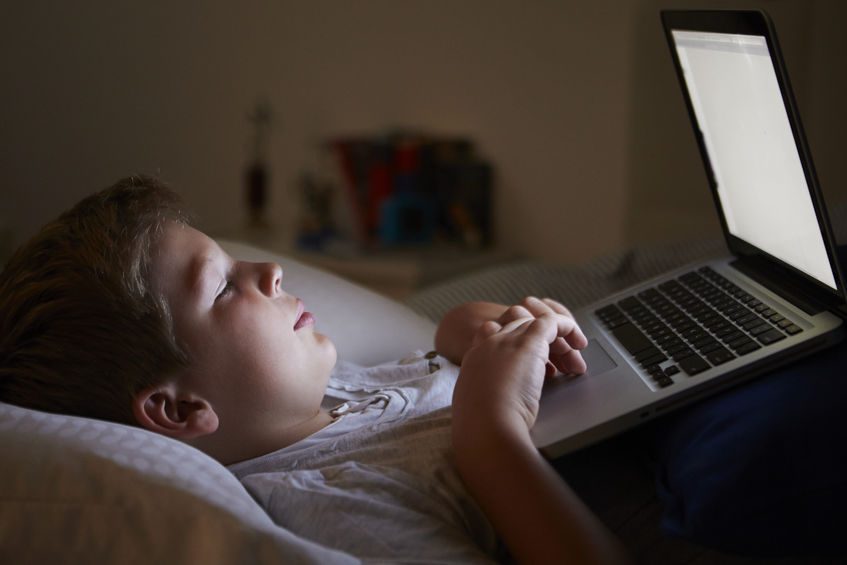NZ children’s screen time unsupervised and unlimited
 ComputerWorld 15 March 2017
ComputerWorld 15 March 2017
Family First Comment: Disturbing results….
“Just 16 percent of high-school students and 37 percent of primary school students reported a limit on the amount of screen time they had at home.
“More than half of high school students said they were never supervised.
“However the Family First lobby group has been issuing warnings about children’s excessive screen time for several years, the latest in February when Family First national director, Bob McCoskrie accused the Ministry of Education of “turning a blind eye to growing concern from health and development experts about the disproportionate use in many families’ lives, particularly the young in New Zealand.”
A survey of almost 6000 New Zealand children in primary and high schools has found most have minimal supervision of their screen time at home and few time limits imposed.
The survey was undertaken by CensusAtSchool TataurangaKiTeKura, a national, biennial project run by the University of Auckland’s Department of Statistics with support from Statistics NZ and the Ministry of Education. It is designed to show children the relevance of statistics to everyday life.
To undertake the survey year 5 to Year 13 students (aged 9 to 18) used digital devices to answer 35 online questions in English or te reo Māori CensusAtSchool says the survey, undertaken by 57000 students so far, provides a unique snapshot of Kiwi childhoods. .
Students were asked if, on a school day, there was a limit on the amount of screen time they had at home. Just 16 percent of high-school students and 37 percent of primary school students reported a limit. For those with limits, primary schoolers were allowed a median of an hour and secondary students two hours.
Students were also asked how often their screen time was supervised, meaning a parent or caregiver was watching or was in the same room as the child. Four in 10 primary schoolers said “a little,” and two in 10 “usually.” More than half of high school students said they were never supervised, with a further three in 10 saying they were supervised “a little.”
CensusAtSchool co-director Rachel Cunliffe expressed surprise at the results. “I imagined that in this completely wired world, the majority of kids would have limits – parents often discuss ways to find a balance between screen time and outdoor play time,” she said. She cited Ministry of Health advice that outside of school, five to 18-year-olds spend less than two hours a day in front of the television, computers, and game consoles.
Screen time warnings from Family First
However the Family First lobby group has been issuing warnings about children’s excessive screen time for several years, the latest in February when Family First national director, Bob McCoskrie accused the Ministry of Education of “turning a blind eye to growing concern from health and development experts about the disproportionate use in many families’ lives, particularly the young in New Zealand.”
He continued: “Parents, children and teachers remain unaware of the medical and developmental risks and the position of medical bodies on discretionary screen time. And the majority of children and adolescents in New Zealand, including toddlers, continue to significantly exceed medical guidelines.”
In February 2015 Family First released a commissioned report: We Need To Talk – Screen time in NZ, Media Use: An Emerging factor in child and adolescent health by biologist / psychologist Dr Aric Sigman. It issued a second statement in October 2016 warning of the dangers of excessive screen time for children and again citing its 2015 report.
Gender differences
According to the CensusAtSchool survey seven in 10 students said they spent time on their phone. Of that group, the most avid users were high school girls with 89 percent on their phones once school was out, and for a median of three hours – though a quarter spent five hours 30 minutes or more.
Four in ten students said they spent time gaming after school, with the keenest gamers high school boys. They spent a median of two hours in front of their Playstation, Xbox, Nintendo and the like – but a quarter spent four hours or more gaming.
CensusAtSchool also asked students what they did most often with their cellphones. Primary school boys reported playing games (27 percent) and primary school girls sending texts or instant messages (32 percent). At high school, it was all about social media for both girls (49 percent) and boys (31 percent).
http://www.computerworld.co.nz/article/615961/nz-children-screen-time-unsupervised-unlimited/






